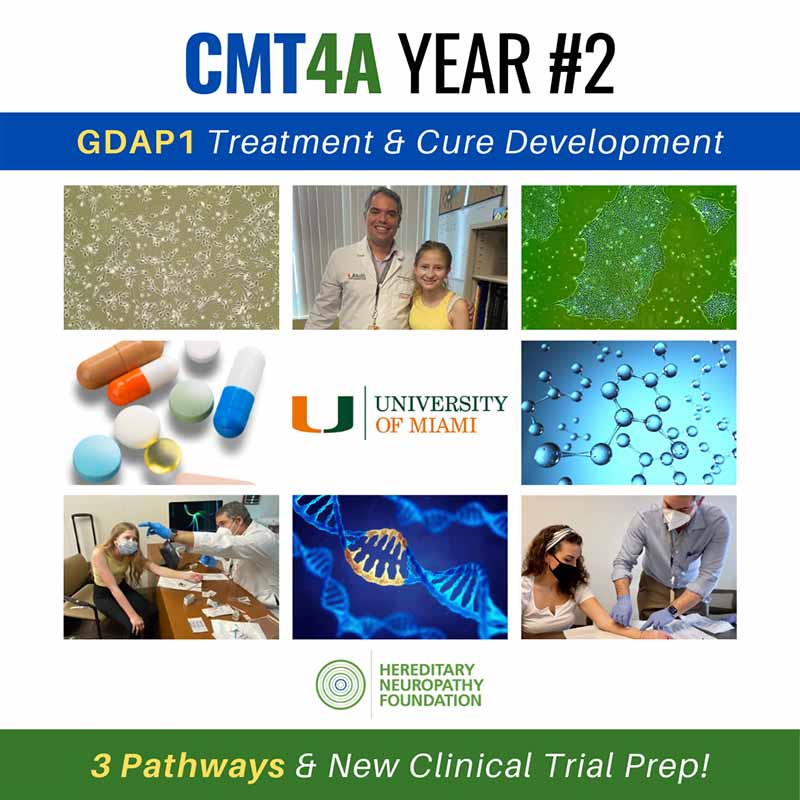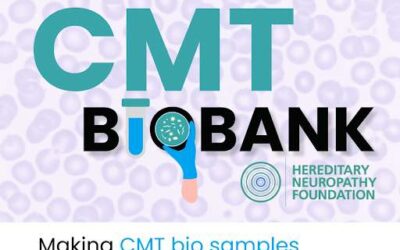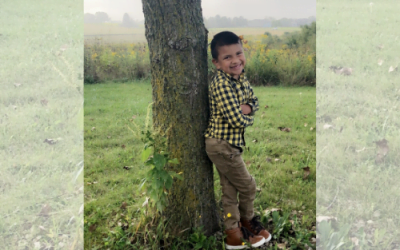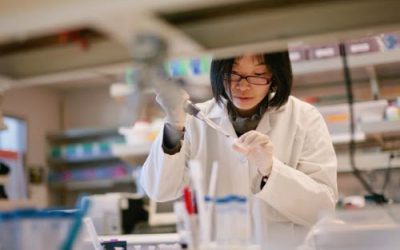Burke Institute / Weill-Cornell – The Willis Lab led by Dianna Willis, PhD has developed a CMT4A rat model developed and owned by HNF to characterize and test a gene therapy to treat GDAP1, a recessive CMT4 subtype. Dr. Willis has decades of experience in developing therapies to treat mitochondrial diseases. In addition, to GDAP1 Dr. Willis’ lab is focused on studying the impact a class of drugs called HDAC6i has on CMT2A, the MFN2 gene. HNF supported the initial seed funding for the HDAC6i, for Miralinc Pharmaceuticals, which now includes, Dr. Willis’ research.
About CMT4A / GDAP1
CMT4 is a rare subtype of CMT, a genetic, neurological disorder that causes damage to the peripheral nerves — tracts of nerve cell fibers that connect the brain and spinal cord to muscles and sensory organs.
CMT4 is a subtype of CMT that is inherited in an autosomal recessive pattern.
“As genetic therapies quickly become a real option for CMT patients,
this new HNF project is very exciting for patients, physicians, and researchers alike”
– Dr. Stephen Züchner, MD, PhD Professor for Human Genetics and Neurology Chair, Dr. John T. Macdonald Foundation Department of Human Genetics Co-Director, John P. Hussman Institute for Human Genomics University of Miami Miller School of Medicine and founder of The Genesis Project.

Year #2 of CMT4A (GDAP1) Research & Treatments
As we enter our second year of our CMT4A (GDAP1) Gene Therapy Initiative, HNF is making progress and expanding its aggressive mission of developing potential treatments and a cure for this unique type of CMT.
“We’ve made swift progress with the success of human-derived cellular models by Dr. Mario Saporta at the University of Miami. We now have differentiated motor neuron cells from GDAP1 patients and we are ready to test multiple potential treatments. At HNF, we understand that the wisest approach is to not put all of our eggs in one basket, so in addition to the Gene Therapy approach, we’ve added 2 NEW promising pathways toward treatment development.” – Allison Moore
Three Promising Pathways for CMT4A (GDAP1) Treatment Development
- Gene Replacement Therapy (Undisclosed Biotech Company)
- HDAC6 (Undisclosed Biotech Company)
- FDA-Approved Function Drug Screening (Rarebase)
*NEW Mobile App – HNF is thrilled to be launching a new mobile app that will modernize CMT clinical trial development via AI and help to connect more people living with CMT to clinical trials and expert care. It will also help characterize the different types of CMT which is critical for research.
Next Steps: We encourage all people living with CMT4A to join our registry, GRIN. Be sure to complete our Core Natural History study – including genetic report & nerve conduction test uploads (if available)!
To meet some of our GDAP1 families, click the button below, or see the related blog posts at the bottom of this page.
2025 CMT Roadshow Coming to a City Near You?
Do you want to make a difference in CMT research? HNF is looking for patients with a confirmed CMT diagnosis to participate in the CMT Biobank
“Grow or Mow” A Sheer Success!
Brandon, his wife, and Alana would host a virtual ‘Mow or Grow’ fundraiser with each $1 vote going towards CMT research.
EmBRACE It Podcast with Lainie Ishbia and Estela Lugo
We want our CMT viewers and listeners to feel like they can relate to us, and that it’s perfectly okay to be imperfect!
Hope for the Future for Owen
A gene therapy is within our reach for GDAP1 (CMT4A), an autosomal recessive loss of function disorder and effecting many patients like Owen.
StarWise Therapeutics & HNF Form A Strategic Alliance to Bring a NextGen HDAC6 Drug Therapy to CMT2A (MFN2) Patients
HNF has been committed to funding HDAC inhibitor research since 2014.
Do You Have Charcot-Marie-Tooth Type 4 (CMT4)? – We Need Your Help
Autosomal recessive demyelinating CMT4 patients present with earlyonset and slowly progressing symptoms. These include progressive distally accentuated weakness and atrophy of muscles in the lower limbs. In addition, patients may have weakness and atrophy of hands, sensory loss and pes cavus (high-arched feet), and walking difficulties. Further information on CMT4 can be found at Orphanet.







